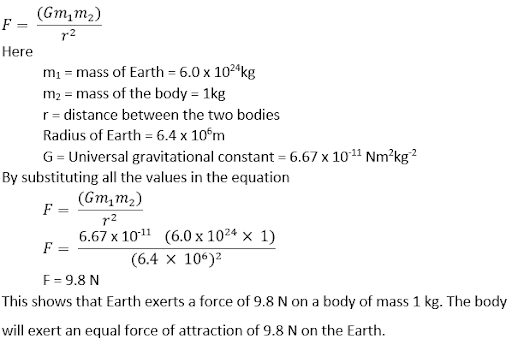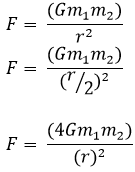(i) According to universal law of gravitation, the force between 2 objects (m1 and m2) is proportional to their plenty and reciprocally proportional to the sq. of the distance(R) between them.

If the mass is doubled for one object.
F = 2F, so the force is also doubled.
(ii)
If the distance between the objects is doubled and tripled
If it’s doubled
Hence,
F = (Gm1m2)/(2R)2
F = 1/4 (Gm1m2)/R2
F = F/4
Force thus becomes one-fourth of its initial force.
Now, if it’s tripled
Hence,
F = (Gm1m2)/(3R)2
F = 1/9 (Gm1m2)/R2
F = F/9
Force thus becomes one-ninth of its initial force.
(iii)
If masses of both the objects are doubled, then

F = 4F, Force will therefore be four times greater than its actual value.



















